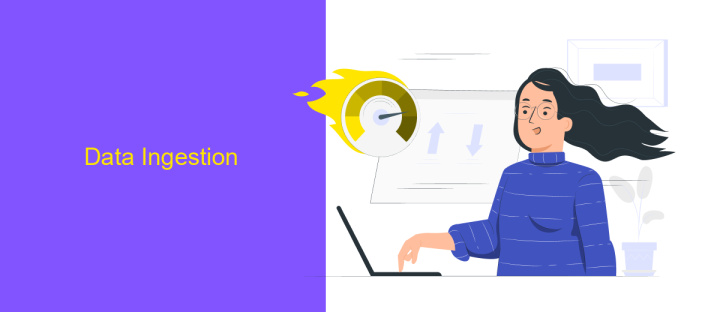Subsurface Data ETL
Subsurface data ETL (Extract, Transform, Load) is a crucial process in the oil and gas industry, enabling the efficient management and utilization of vast amounts of geological and geophysical data. By automating data extraction, transformation, and loading, companies can enhance decision-making, optimize resource allocation, and streamline operations, ultimately driving better exploration and production outcomes.
Introduction
Subsurface Data ETL (Extract, Transform, Load) is a critical process in the energy and natural resources industries. It involves extracting vast amounts of raw data from various subsurface sources, transforming it into a usable format, and loading it into a data warehouse for analysis. This process enables organizations to make informed decisions, improve operational efficiency, and enhance resource management.
- Extraction: Gathering data from multiple subsurface sources such as seismic surveys, well logs, and geological studies.
- Transformation: Converting raw data into a standardized format, cleansing, and enriching it for analysis.
- Loading: Storing the transformed data into a centralized repository for easy access and analysis.
Integrating subsurface data ETL processes can be complex and time-consuming. Services like ApiX-Drive simplify this by automating data integration and synchronization. ApiX-Drive allows seamless connectivity between various data sources and destinations, reducing manual effort and ensuring data accuracy. By leveraging such tools, organizations can focus on deriving actionable insights from their subsurface data, ultimately driving better decision-making and operational success.
Data Ingestion

Data ingestion is a critical step in the ETL process, as it involves the collection and importation of data from various sources into a centralized repository. This phase ensures that raw data is available for further transformation and analysis. Effective data ingestion requires the ability to handle diverse data formats and sources, including databases, APIs, and flat files. Implementing a robust ingestion pipeline can significantly improve data quality and accessibility, setting the foundation for successful downstream processing.
To streamline the data ingestion process, integration tools like ApiX-Drive can be utilized. ApiX-Drive offers seamless connectivity between different data sources and destinations, enabling automated data transfer without the need for extensive coding. By leveraging such tools, organizations can reduce the complexity of data integration, ensuring that data flows smoothly into the ETL pipeline. This not only saves time but also minimizes the risk of errors, enhancing the overall efficiency of the data management process.
Data Transformation

Data transformation is a critical step in the ETL process, especially for subsurface data, which often comes from various sources and formats. This step ensures that the data is converted into a consistent format that can be easily analyzed and interpreted. Effective data transformation improves data quality and enables more accurate decision-making.
- Data Cleaning: Remove any errors, duplicates, or inconsistencies in the data.
- Data Normalization: Convert data into a common format or structure.
- Data Enrichment: Enhance the data by adding relevant information from external sources.
- Data Aggregation: Summarize data to provide a higher-level view.
- Data Integration: Combine data from multiple sources into a unified dataset.
Services like ApiX-Drive can facilitate the data transformation process by automating the integration of various data sources. ApiX-Drive allows users to set up and manage data workflows without the need for extensive coding, making it easier to handle complex subsurface data transformations. By leveraging such tools, organizations can ensure their data is accurate, consistent, and ready for analysis.
Data Integration

Data integration is a critical component of Subsurface Data ETL, ensuring that diverse data sources are seamlessly combined and made accessible for analysis. This process involves extracting data from various subsurface sources, transforming it into a consistent format, and loading it into a unified data repository.
To achieve successful data integration, it's essential to utilize robust tools and platforms that can handle the complexities of subsurface data. One such tool is ApiX-Drive, which offers a user-friendly interface for connecting and automating data flows between different systems without the need for coding expertise.
- Automates data extraction from multiple subsurface sources
- Transforms data into a standardized format for consistency
- Loads integrated data into a central repository for easy access
- Supports real-time data synchronization and updates
By leveraging tools like ApiX-Drive, organizations can streamline their data integration processes, reduce manual intervention, and ensure that their subsurface data is accurate and up-to-date. This ultimately enhances the efficiency of data analysis and decision-making processes.


Data Quality Management
Ensuring data quality in Subsurface Data ETL processes is critical for accurate analysis and decision-making. Effective data quality management involves implementing robust validation checks, consistency controls, and error detection mechanisms throughout the ETL pipeline. This includes verifying data integrity, standardizing formats, and eliminating duplicates to maintain a high level of data accuracy. Regular audits and monitoring are essential to identify and rectify any anomalies or discrepancies promptly.
Integrating automated tools and services like ApiX-Drive can significantly enhance data quality management. ApiX-Drive facilitates seamless data integration by automating data transfers between various systems, ensuring data consistency and reducing manual errors. Its user-friendly interface and customizable workflows allow for efficient handling of complex data sets, thereby improving the overall reliability of the ETL process. By leveraging such tools, organizations can maintain high data quality standards, ultimately leading to more informed decision-making and operational efficiency.
FAQ
What is Subsurface Data ETL?
Why is ETL important for subsurface data management?
What are the common challenges in Subsurface Data ETL?
How can automation tools help in Subsurface Data ETL?
What should be considered when selecting an ETL tool for subsurface data?
Do you want to achieve your goals in business, career and life faster and better? Do it with ApiX-Drive – a tool that will remove a significant part of the routine from workflows and free up additional time to achieve your goals. Test the capabilities of Apix-Drive for free – see for yourself the effectiveness of the tool.

